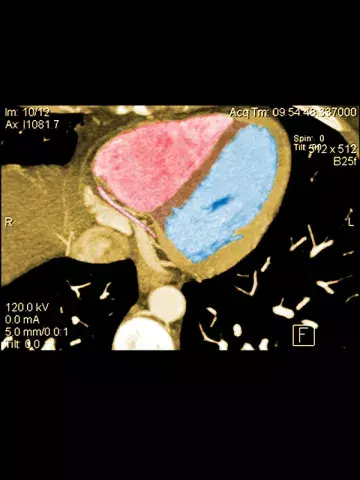New research provides insights into the natural history of coronary artery disease
By Michael Doris MB BS
Extensive or obstructive subclinical atherosclerosis is linked to substantial excess risk for myocardial infarction (MI), Danish researchers have shown in a recent study on the prevalence of atherosclerosis and MI in asymptomatic people.
In their prospective observational cohort study, published in Annals of Internal Medicine, 9553 men and women aged 40 years or older with no symptoms of coronary artery disease underwent computed tomography coronary angiography (CTCA). To avoid intervention based on the results, the CTCA results were not communicated to clinicians or participants. The study findings would therefore ‘reflect the natural history of subclinical coronary atherosclerosis in the setting of medical and lifestyle risk modifications according to contemporary clinical practice,’ the researchers explained.
Coronary atherosclerosis was detected in 46% of participants, with higher rates found in men (61%) than women (36%). Atherosclerosis was classified as obstructive (50% or greater luminal stenosis) or nonobstructive, and extensive (affecting one-third or more of the coronary tree) or nonextensive. Nonobstructive disease was found in 36% of participants and obstructive disease in 10%.
Over the median follow up of 3.5 years, 71 participants (0.7%) had an MI and 193 (2%) died. A combined endpoint of MI or death occurred in 260 participants (2.7%).
The risk of MI was increased both in participants with obstructive disease (adjusted relative risk [aRR], 9.19) and in those with extensive disease (aRR, 7.65). However, it was highest in those with obstructive-extensive disease (aRR, 12.48) and obstructive-nonextensive disease (aRR, 8.28).
The risk for the combined endpoint of death or MI was increased in participants with extensive disease, whether obstructive (aRR, 2.7) or nonobstructive (aRR, 3.15).
The authors acknowledged the limitations of their study, including most participants being Caucasian and only 5% being in the low-income group.
In an accompanying editorial, Dr Michael McDermott and Professor David Newby from the British Heart Foundation Centre for Cardiovascular Science at the University of Edinburgh, UK, said: ‘This exceptional and important study now provides a bench-mark against which to observe the contemporary natural history of coronary artery disease.’
They noted that the findings contrasted with previous studies on symptomatic patients, where future MIs seemed to result from plaque rupture in nonobstructive disease.
‘This suggests that in asymptomatic patients, obstructive disease may be more closely linked to myocardial infarction perhaps because the provocation of more severe ischemia is left unchecked in the absence of limiting symptoms,’ they wrote.
The editorialists added that the study ‘will inform public health prevention strategies and ongoing clinical trials’ in preventing coronary artery disease.
Ann Intern Med 2023; doi:10.7326/M22-3027 and doi:10.7326/M23-0533.


